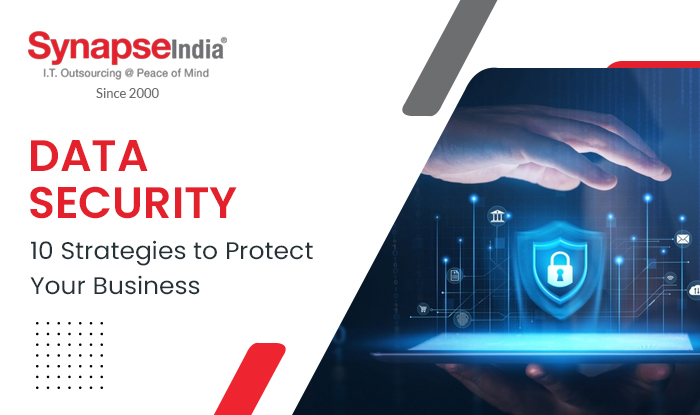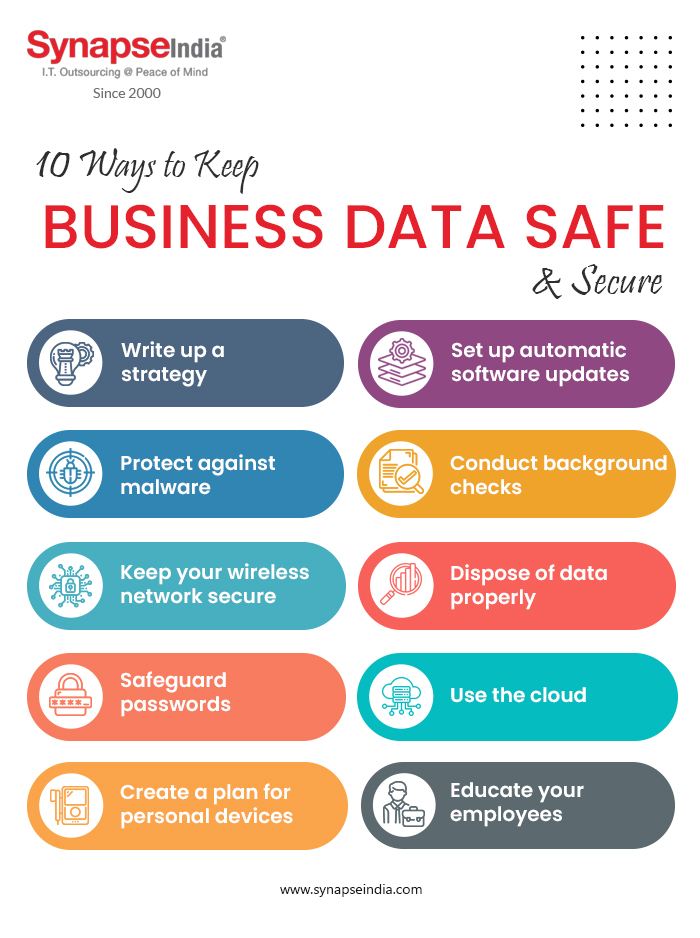 26 Aug 2022
26 Aug 2022“These days it is important for every organization to have a data protection strategy. Adhering to these strategies, data of the organization remain safe and secure. It protects the organization from unwanted data threats.”

Whether it's happening at an enormous corporation or the fresh start up on the block, web threats and information burglary can make massive interruptions to any business everyday tasks. Without the legitimate security and techniques in place, organizations leave themselves open to the outcomes of such attacks, which are, best case scenario, baffling and even from a pessimistic standpoint irreparable.
Really harming, they're additionally effectively avoidable when you have adopted appropriate safeguard techniques. If you're wanting to guarantee business coherence, putting resources into the right strategies is fundamental. To get you rolling in the right direction, the following are ten viable tips your business can use to keep its data safe and secure.


To understand the above-mentioned ways precisely, lets discuss them in detail.
Instead of having a dubious thought of strategy and techniques, organizations of all sizes ought to have a proper data protection security strategy that is basically as definite and thorough as could really be expected. It's basic that it does not lay out how to safeguard information and resources, yet what to do should things turn out badly. An incident-response system guarantees you'll be a step ahead, rather than making any rash heat-of-the-moment reactions that might make things worse.
Avoid data threats by getting your PCs and organization against malware. Malevolent software that can cause huge measures of information harm, malware can swarm on unprotected machines without you in any event being familiar with it.
If you have a remote organization, be careful: hackers are holding on to jump on it without giving any kind of warning. An encryption key might confound the individuals who aren't particularly well informed, however to hackers, its a breeze to bypass.
Fortify your router by utilizing the most grounded encryption setting you can to protect your business, and turn off the telecom capability to make your organization imperceptible. Taking everything into account, they can't hack what they can't really see.

Make your passwords no less than eight characters in length, and implant numbers and other non-standard characters within them, so they won't be quickly speculated. Transforming them frequently can likewise help - as can utilizing credentials which aren't words, however blends of seemingly random letters, numbers, and extraordinary characters.
Here's where password managers truly make their mark, meaning your representatives don't need to stress over recollecting them and won't risk writing them down.
More normal in small-to-medium sized organizations, ensure you're keeping up to date with the security risks related with workers bringing in and utilizing their own devices.
Make a plan for the training to give some protection against legitimate repercussions and mobile system costs. An unmistakable, thorough strategy covering relevant information deletion, location tracking, and Internet checking issues can be truly significant.
One of the best types of data security measures is having automatic software updates. Hackers love to scan a network or site to see which rendition of software it's running on to make it more straightforward for them to take advantage of the vulnerabilities of more established versions. Updating device security settings, operating systems and other software to their most recent adaptations can keep this from occurring. Set any patches and upgrades to consequently update in the background to further protect against potential threats.
Be extra careful concerning recruiting new workers; safeguarding against internal threats assumes a vital part in compelling cyber security. Find out about their background and provide yourself with a thought of what kind of individual they are.
Moreover, be aware of changes in the personality of existing workers, as this could be characteristic of different issues.
Having the appropriate estimates in place to discard data which is not generally needed is a basic factor in reducing the risk of a security breach. Privacy and information security is essential to keep data safe.
Guaranteeing that retired and reused devices and storage media have had their items appropriately eliminated will guarantee that private organization information can't be recovered sometime later - and won't fall into some unacceptable hands.
Keep in mind; Reinstalling your operating system, designing your hard drive, or deleting explicit documents and folders doesn't guarantee your information is no more. As a matter of fact, much of the time your information is still totally accessible with unreservedly accessible tools. Make sure your IT disposal partner is utilizing an instrument that overwrites your information on various occasions guaranteeing your information is unrecoverable.
Organizations ought to hope to carry out a sound data obliteration strategy which frames the protocol for each use case (PCs, telephones, outer hard drives, and glimmer memory) - whether these devices are being rearranged within the business or discarded at the end of their life cycles.
If your business doesn't have the opportunity or expertise to keep steady over all the security issues updates requiring consideration, then it very well be worth looking at a cloud provider.
Also Read: Cloud solutions ensure complete data security of business
A respectable cloud provider will actually want to store information, keep up with programming patches and carry out security. While not likely to be reasonable for large organizations, this can be a decent methodology for small businesses hoping to furnish themselves with a level of security.
Ensuring everybody in your business comprehends organization security policy is significant. Whether you pick to do it during onboarding or conduct half-yearly supplemental classes, it's worth completing - simply ensure everybody is paying attention to the practices, all through the whole organization.


 01 Jun 2024
01 Jun 2024
